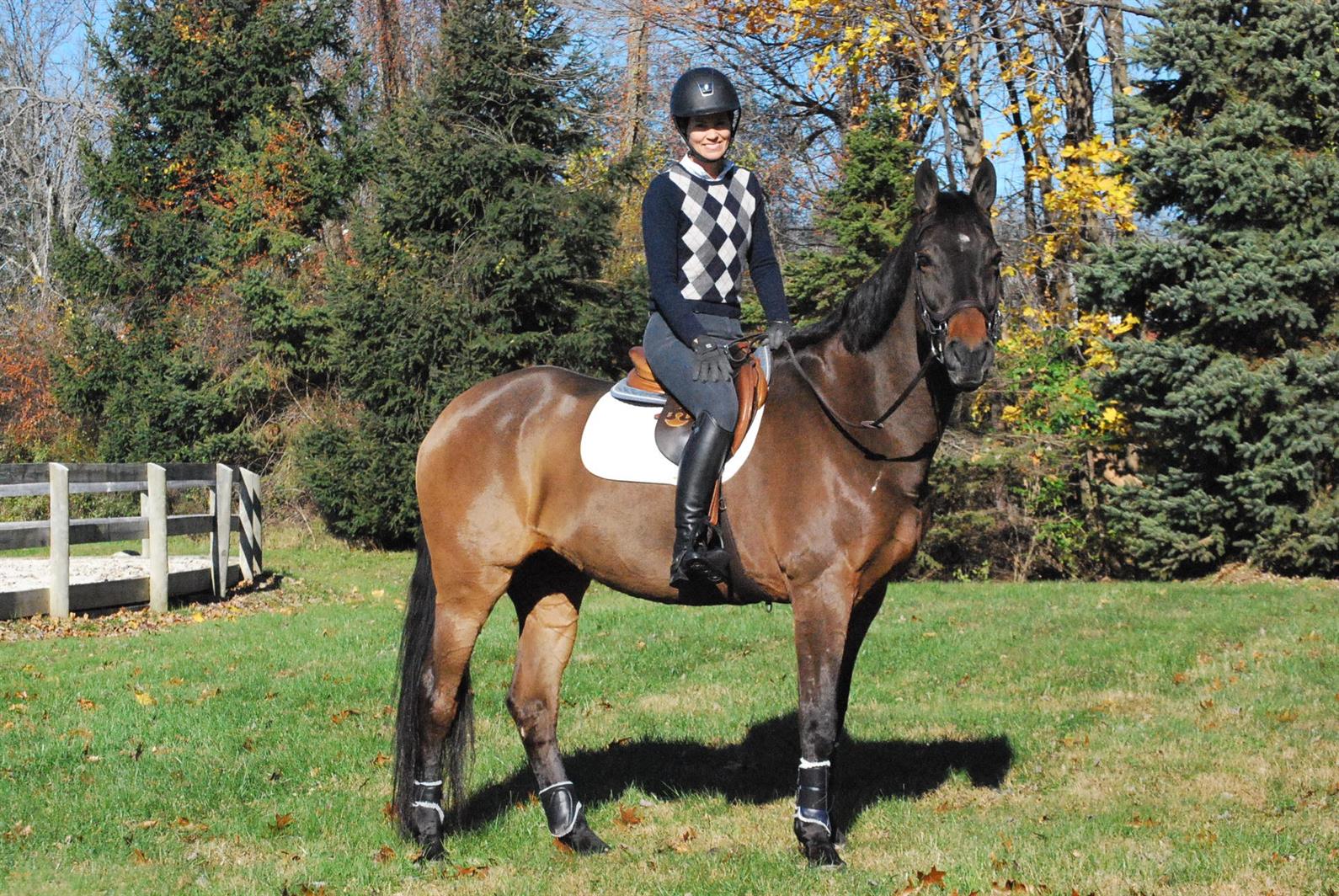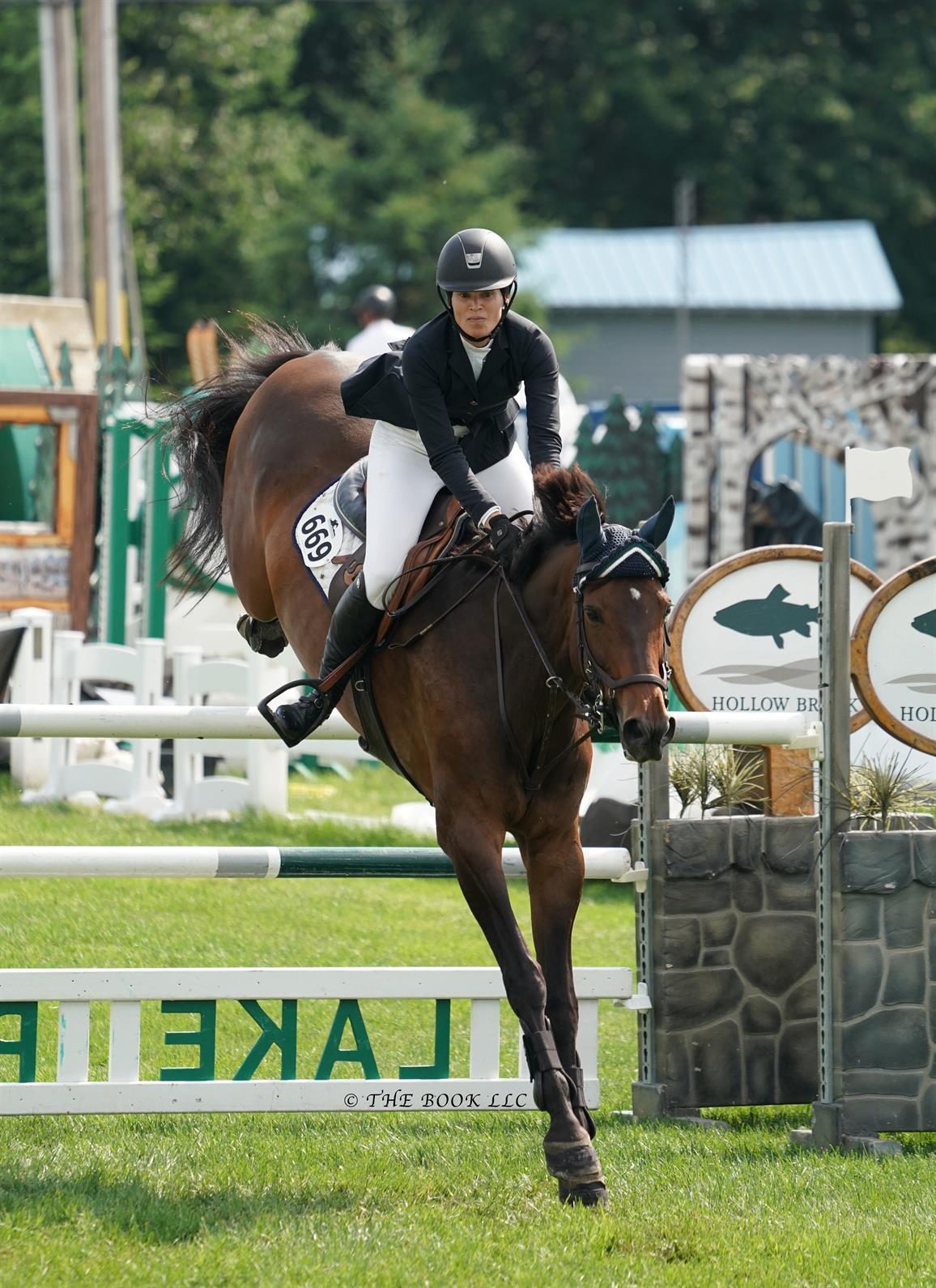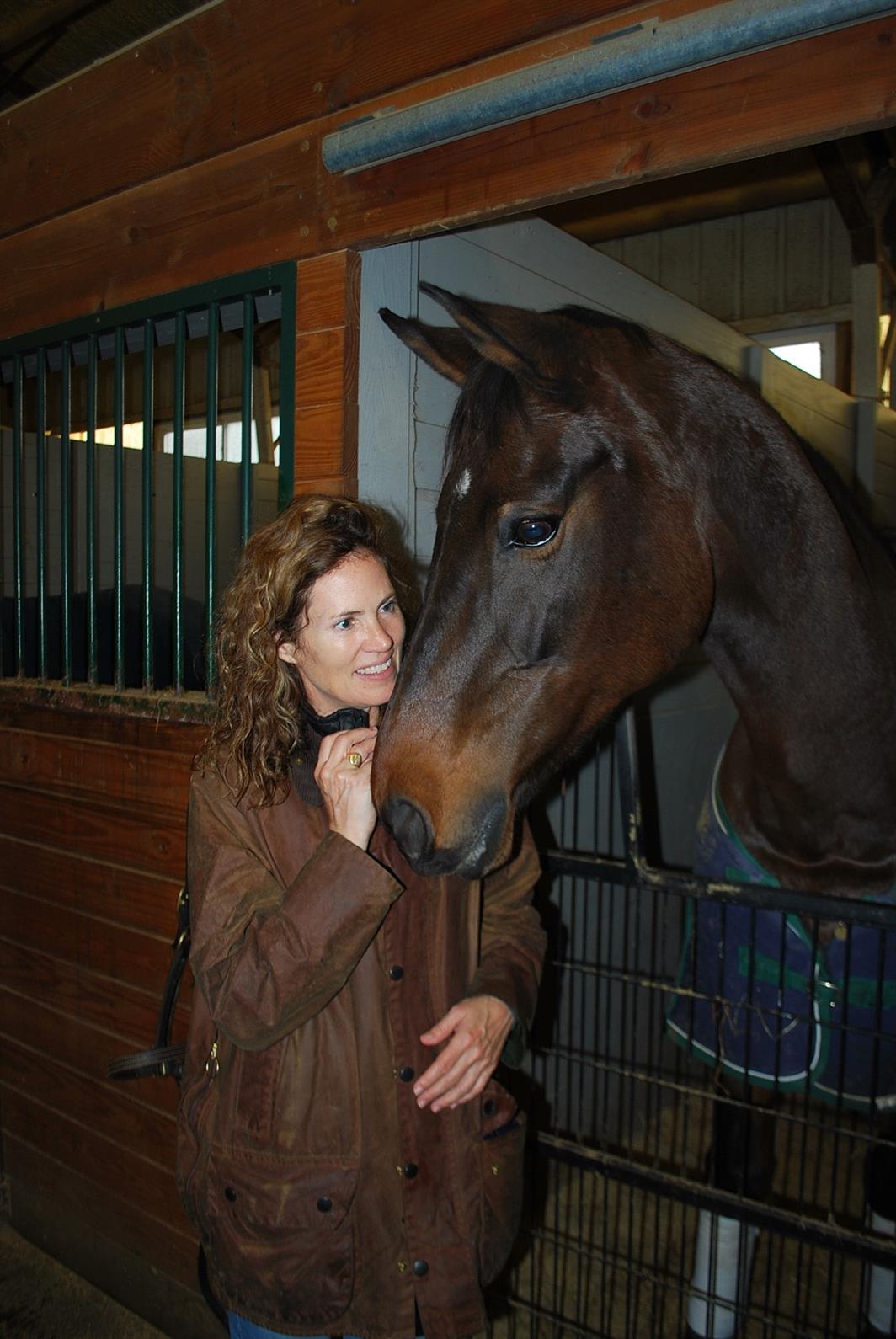
Photo: Rob Cassady
My mare Tomasa has to be retired due to an injury, and I feel like I’m losing a part of my family. It is difficult to accept that this 19-year-old horse, whom I have leaned on both physically and emotionally for the past decade, will no longer be central to my life.
We first met on a hot Sunday afternoon, the last day of a fall horse show at the LA Equestrian Center in California. Tomasa was clipped into crossties in the barn aisle where she was temporarily stabled, still breathing hard after being tried by my then 14-year-old daughter Wendy, who was lifting her saddle from Tomasa’s sweaty back as I arrived. Tomasa watched me approach with beautiful sloe eyes, her ears pricked forward curiously despite the tiredness she exuded. I greeted her softly, holding out my hand, and she put her nose into my palm. There was something about her that I recognized, as if she had suffered but still hadn’t lost her spirit, and I was instantly drawn to her.
We brought Tomasa home on a week’s trial, and it became clear that she wasn’t trained well enough for my daughter to be able to show. But our trainer still thought the mare was worth investing in, so I bought Tomasa for myself. I had only started riding again three years prior, after a 25-year hiatus, and wasn’t in a hurry to compete at any certain level. I could afford to take some time with a new horse. But Tomasa and I had similar temperaments and clicked fast. Both of us were athletic, highly competitive, and had blood that turned hot whenever the jumps went up. After a few months of training at home, we began showing in the low amateur jumpers, and I couldn’t remember the last time I’d had so much fun or felt so connected to myself, having Tomasa as a partner.

Photo: The Book LLC
When I started to ride again in my 40s, it put my already strained marriage under more pressure. Paradoxically, it was also the one thing that gave me the strength to handle a family that seemed to be breaking at the seams. I was raising three children and drowning in a sea of self-doubt about my marriage, my parenting strategies, and my own capacity for resilience. Although I turned to therapy for help, the one place I felt strong was at the barn, surrounded by the healing energy of horses and the sport of show jumping, which fed my body and soul like vital oxygen.
My family, including two dogs, a cat, a rabbit, and two horses, moved from West Coast to East less than a year after I bought Tomasa, in what became a last-ditch effort to save my marriage. But here in Connecticut is where that family finally fell apart. Tomasa was like life support during this period of my divorce being finalized, my father dying, and my kids lashing out at me in devastation and anger. I found comfort in Tomasa, in her warmth and solidity. Just the smell of her would slow my heart rate down, the feel of her soft coat under my hand lessening the ache of grief inside me. She didn’t like big displays of affection, but on my worst days she would stand quietly in her stall and let me sob into her neck.
Riding and showing Tomasa kept me grounded, gave me structure and purpose when it felt like the rest of my life was blowing up. The discipline of daily training, the mental focus it required, and the responsibility I had to my horse gave me the confidence I desperately needed to face my challenges, both in and out of the ring. Jumping technical courses, communicating constantly with Tomasa in a physical as well as psychological sense, reminded me that I still had a good partnership, even if my marriage no longer was. I could still feel the joy in being part of a team, feel the hunger to win, and even how it felt to succeed.
Our success in the ring was due to Tomasa’s competitiveness as much as my own, however. Over the past 10 years of our showing together, we moved up and then down again in jump height, following her health and fitness, as well as how often we could show due to financial limitations. But no matter what class we were in, Tomasa brought her game. Every single time we walked up to the in-gate after our warm-up and stood watching the horse before us jump the course, I could feel her whole body lift up under me, growing taller as if she were flexing. Her bonneted head would follow the other horse’s path around the ring, and her heart beat faster through my legs in anticipation.

Photo: Rob Cassady
During Wendy’s senior year of high school, and her last eligible Junior year, I gave her Tomasa to ride and show. It almost killed me to give up riding then, when I had just recently recovered such an important part of my identity, but when I saw how much fun Wendy had jumping Tomasa, how much she improved as a rider having two horses, and how she benefitted from Tomasa’s professional demeanor and wisdom, it was worth the sacrifice. Tomasa co-parented in a way that year, adjusting to her new role with tolerance and grace, and I was grateful that even in this, she had my back. I trusted her completely to carry my daughter safely over big jumps. And she did.
The last time I showed Tomasa was in the Low Amateur Jumper Classic at the Palm Beach International Equestrian Center in Wellington, Fla., last March. We jumped double clean and ended up third out of a field of about 90. It was a great result for us, and I knew then we couldn’t beat it, not with her age at that height, built at a solid 1.25 meters (4’1”). Not when she brought 150% to the ring every single time we showed. She had so much heart she would try until she broke, and I didn’t want to break her.
I leased Tomasa out in the barn, hoping that working at a lower height would preserve her for a while longer and that I could still see her every day while I started riding a new, young horse. It was painful at first to see Tomasa watch me walk past her stall and into the one next to hers, leading out the young horse instead. Even though I always stop to say hi, to pet her and give her a treat, sometimes she shows her jealousy, pinning her ears and scraping her teeth on the bars between their stalls when I am near.
But recently when I went to visit her in the paddock, quietly apologizing for her injury, for the recent changes in her status, I was overcome with sadness for this great horse who had given me everything she had in her to give, who literally saved me when I thought I might not survive my grief. As I leaned over the gate, tears of shame and guilt began rolling down my cheeks, knowing that I would move on without her. And then Tomasa did something she has never done before. She touched her nose to my face and gently ran her muzzle over it, feeling for the tears there, and stood close to me until I was cried out.
Tomasa will be heading south soon, where she will live out her days in a field with other horses. After being an athlete for so long, she has earned the right to just be a horse again. Her coat has gotten fuzzy from wearing fewer blankets, being conditioned for outside living, for less grooming, and less human interaction. I hope she will adjust easily, that her heart doesn’t ache like mine because I will no longer get to see her every day. I’m not ready to say goodbye, to lose this friend and partner, this family member, but I will try and emulate her resilience. Even though I can no longer ride her, it seems that she is still teaching me things I need to know about compassion, and about acceptance. Perhaps her last lesson to me is a simple one: that greener pastures lie ahead.
Ashley Collins's work has appeared online at HuffPost, Grown and Flown, Horse Network, Mothers Always Write, and in the anthologies Nothing But The Truth So Help Me God: 73 Women on Transitions and Here In The Middle: Stories of Love, Loss, and Connection from the Ones Sandwiched Between. She currently writes a blog about her family and animals, and is working on a memoir about mothers, daughters, and horses. You can read more about her at ashleycollinswriter.com and on social media at facebook.com/ashleycollinswriter and instagram.com/ashleygriffincollins.


